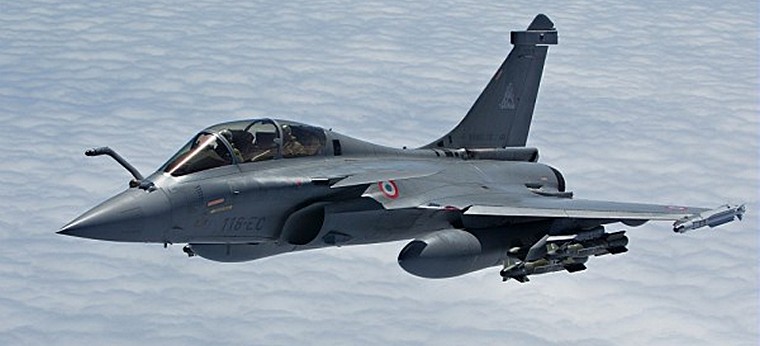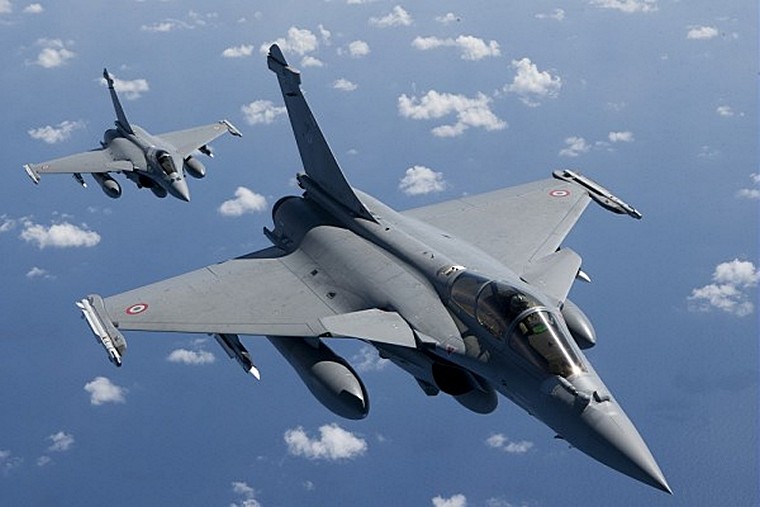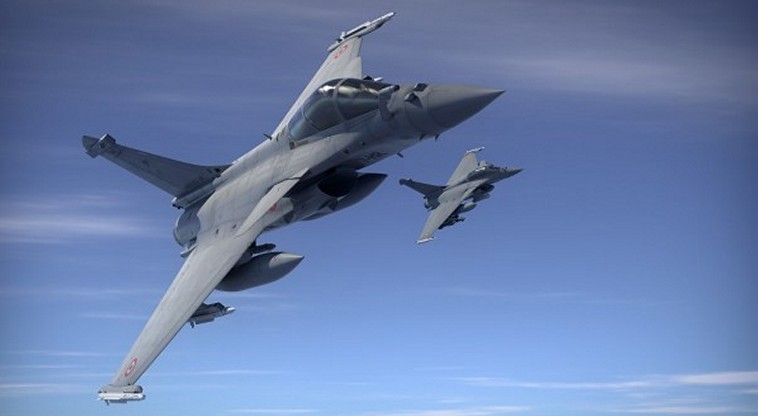RAFALE- FRANCE'S OMNIROLE FIGHTER

Photo Dassault
Over the last decades, air forces have always been the first military component engaged in all crises or conflicts, from the Falklands to the Gulf, from Bosnia to Kosovo, from Afghanistan to Libya, and more recently Mali, the Central African Republic and Iraq.
Military aviation is undoubtedly the most strategic weapon today, both in terms of combat effectiveness and of critical technologies implemented. In modern warfare, air dominance from day one is a must, so that air-to-ground and air-to-sea operations can be conducted safely and efficiently.

Photo Dassault
In the course of asymmetrical and counter-insurgency conflicts, the air arm also remains at the forefront of the military effort, its flexibility and firing power helping ensure that allied forces prevail. The September 11 events have shown that, in peacetime, it is essential to secure the national airspace with easily deployable control and air defence assets. The decisive place of the air component in modern warfare is demonstrated by the defence strategies decided by those nations who want to keep a leading role on the world stage.

Photo Dassault
When the Rafale programme was launched, the French Air Force and French Navy published a joint requirement for an omni-role aircraft that would have to replace the seven types of combat aircraft then in operation. The new aircraft would have to be able to carry out a very wide range of missions: Air-defence / air-superiority, Anti-Access/Area Denial, Reconnaissance, Close air support, Dynamic Targeting, Air-to-ground precision strike / interdiction, Anti-ship attacks, Nuclear deterrence and buddy-buddy refuelling.
The Rafale, with its "Omni-role" capabilities, is the right answer to the capability approach selected by an increasing number of governments. It fully complies with the requirement to carry out the widest range of roles with the smallest number of aircraft. The Air Force single-seat Rafale C, the Air Force two-seat Rafale B, and the Navy single-seat Rafale M feature maximum airframe and equipment commonality, and very similar mission capabilities.

Photo RIAT Tim Felce/ commons.wikimedia.org
Thanks to its versatility, its adaptability and its ability to meet all air-mission requirements, the RAFALE is the "poster child" transformational fighter which provides a way forward to air forces confronted to the requirement of doing "more" with "less", in an ever-changing strategic and economic environment.
Of a moderate size, yet extremely powerful, superbly agile and very discrete, the latest type of combat aircraft from Dassault Aviation does not only integrate the largest and most modern range of sensors, it also multiplies their efficiency with a technological breakthrough, the "multi-sensor data fusion". In essence, the "multi-sensor data fusion" concept implemented into the RAFALE allows the pilot to act as a true "tactical decision maker", rather than being only a sensor operator.

Photo Dassault
The core of these enhanced capabilities of the Rafale lays in a new "Modular Data Processing Unit" (MDPU) incorporating "commercial off the shelf" (COTS) elements. It is composed of up to 19 flight "line-replaceable units" (LRUs), with 18 of them individually providing 50 times the processing power of a typical mission computer employed in previous generation fighters.

AASM-Hammer family of weapons. Photo Killersurprise64 / Public Domain / commons.wikimedia.org
The Rafale has been cleared to operate the following weapons:
The MICA air-to-air "Beyond Visual Range" (BVR) interception, combat and self-defence missiles, in their IR (heat-seeking) and EM (active radar homing) versions. The MICA can be used within visual range (WVR) and beyond visual range (BVR).
The HAMMER (standing for Highly Agile and Manoeuvrable Munition Extended Range) modular, rocket-boosted air-to-ground precision guided weapon series, fitted with INS/GPS or INS/GPS/IIR (imaging infra-red) guidance kits, or with the upcoming INS/GPS/laser guidance kit.
The SCALP long-range stand-off missile, the AM39 Exocet anti-ship missile, laser-guided bombs, the 2500 rounds/min Nexter 30M791 30 mm internal cannon, available on both single and two-seater and the upcoming Meteor long-range air-to-air missile,
From 2006 to 2011, French Air Force and Navy Rafale fighters were engaged in countless combat missions in Afghanistan where they demonstrated a very high proficiency and a tangible military value. The AASM/HAMMER precision-guided modular air-to-surface armament, Paveway laser-guided bombs, and the 30 mm cannon were employed on many occasions, scoring direct hits with remarkable precision.

Photo Matthew DeWitt / Public Domain / commons.wikimedia.org
In 2011, French Air Force and French Navy Rafale fighters were successfully engaged in coalition operations over Libya. They were the first fighters to operate over Benghazi and Tripoli, and they carried out the whole spectrum of missions the Rafale was designed for: air-superiority, precision strikes with Hammers and laser-guided bombs, deep strike with SCALP cruise missiles, Intelligence, Surveillance, Tactical Acquisition and Reconnaissance (ISTAR) and Strike Coordination and Reconnaissance (SCAR). During the Libyan conflict, hundreds of targets - tanks, armoured vehicles, artillery emplacements, storage dumps, command centres and air-defence systems (SA-3 Goa and SA-8 Gecko fixed and mobile SAM launchers) - were hit with devastating accuracy by Rafale aircrews.
French Air Force Rafales have taken a leading role in Mali, helping destroy enemy infrastructure and support friendly troops in contact. Four Rafales undertook the longest raid in French Air Force history, taking off from Saint-Dizier, in eastern France, and landing in N'Djamena, in Chad, after hitting 21 targets and spending no less than 9 h 35 min airborne. The French Air Force quickly set up a forward operating base in Chad, and the RAFALE detachment later grew to eight aircraft. This represented the first time the Rafale had operated from a FOB in Africa.

Photo Capt. Jason Smith / Public Domain /commons.wikimedia.org
More recently, Rafales were engaged in support of peace-keeping operations in the Central African Republic, and as part of a wide international coalition in Iraq.
|
        |























